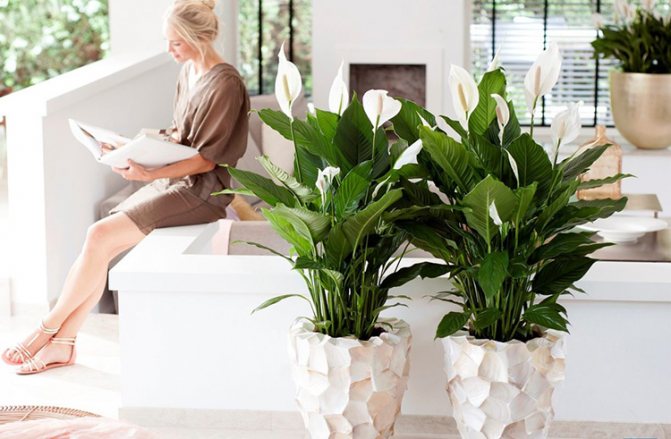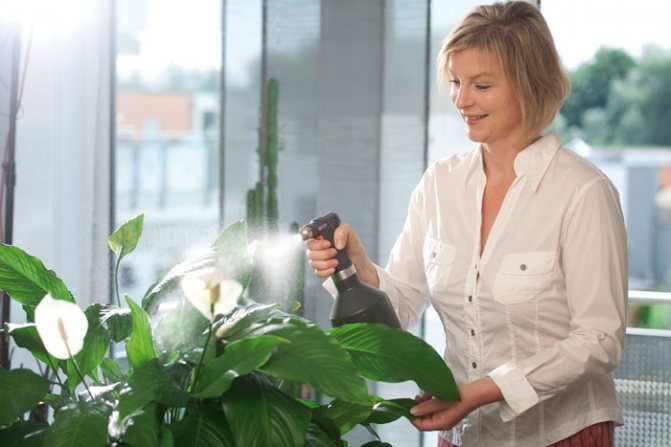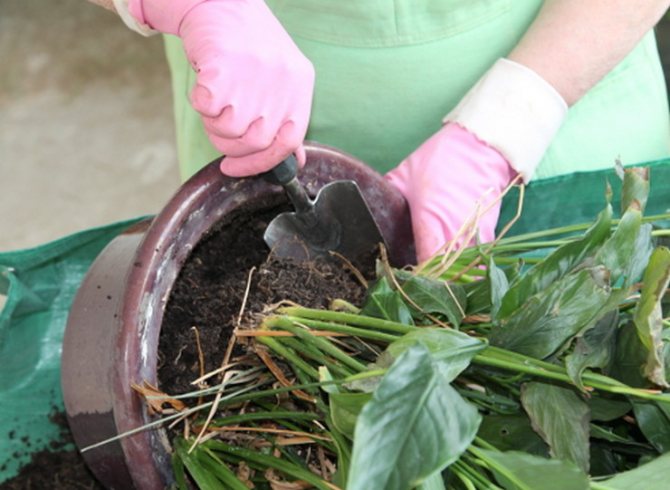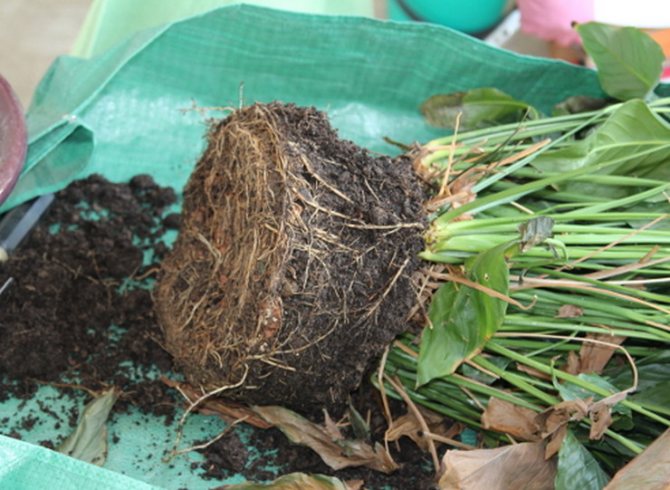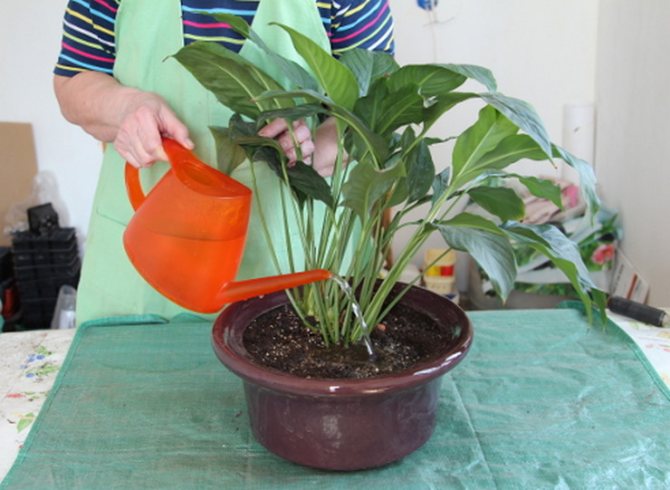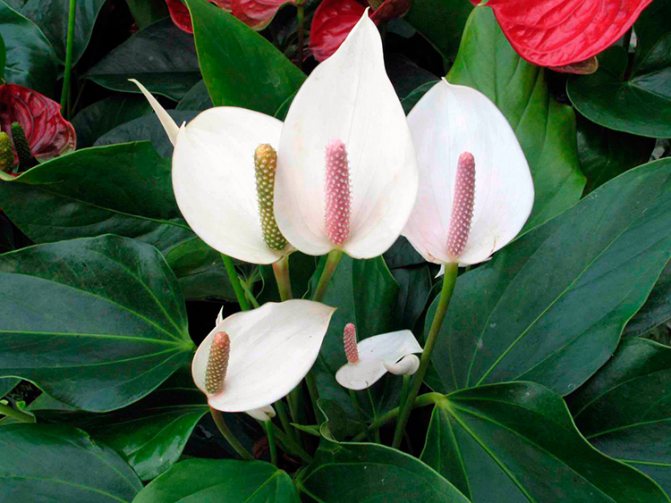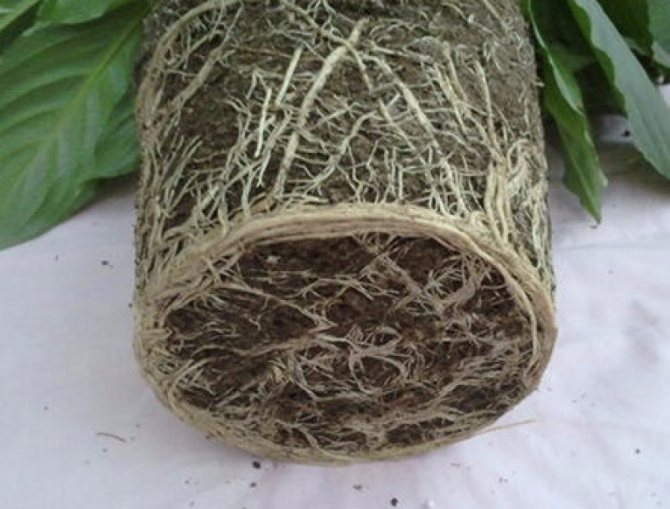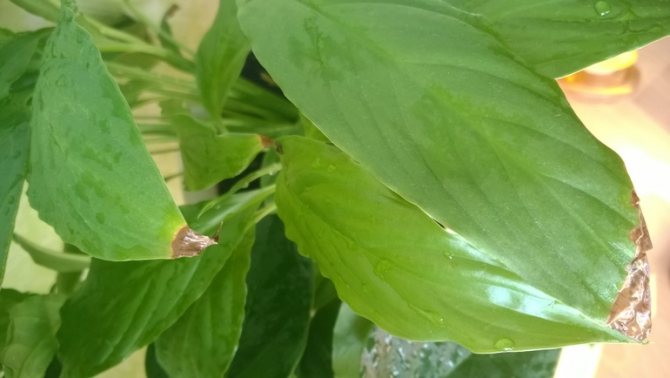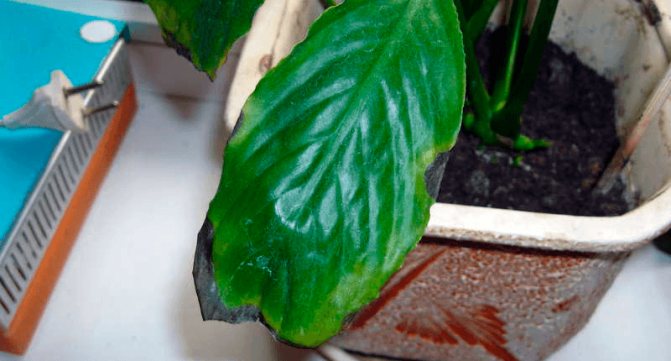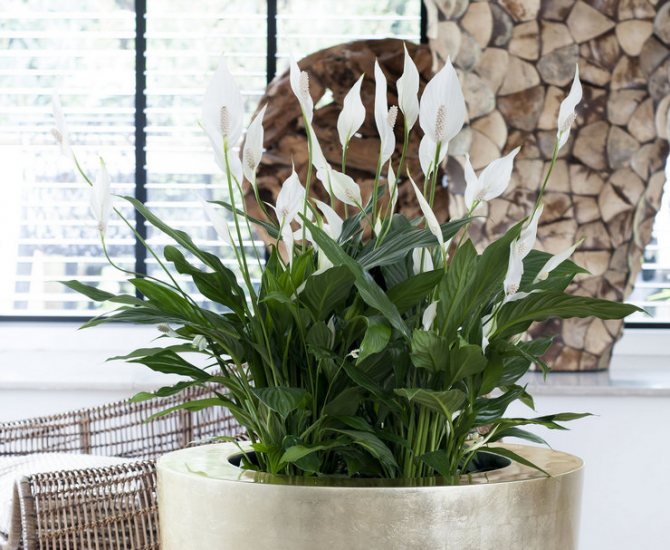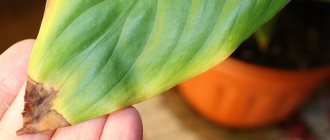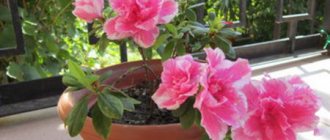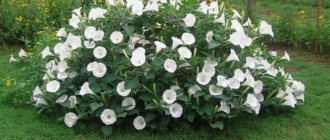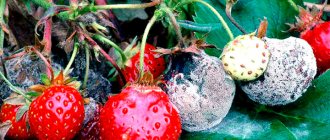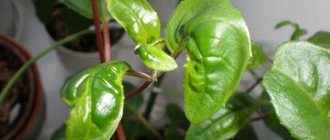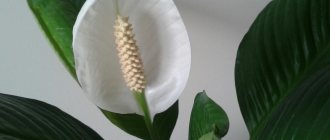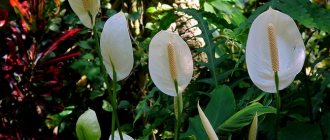Spathiphyllum is a flowering evergreen plant representing the aroid family. The flower is well known in Russia under the name "Women's Happiness". How to care for it, transplant, water, fertilize - these and other rules for the competent care of spathiphyllum will be considered in this review. Indoor gardening lovers are familiar with the problems that prevent ornamental plants from delighting in magnificent bouquets. Using specific examples, we will analyze how you can cope with these troubles at home.
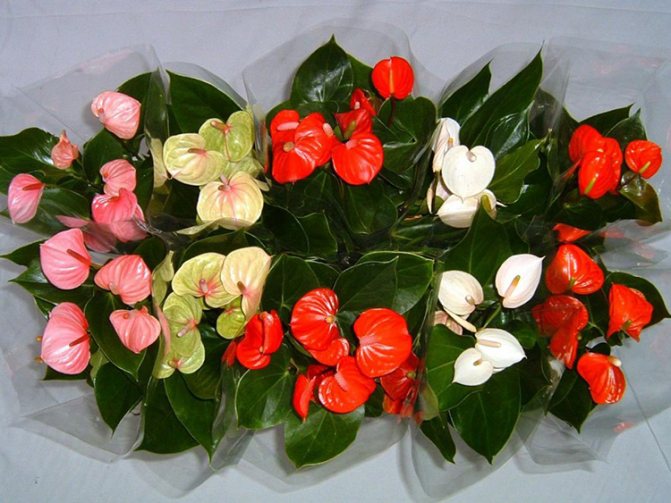
Spathiphyllum is different
What you need to know before transplanting
The comfortable temperature, in principle, does not fluctuate too much. So average and ideal is about 20 degrees, give or take two.
Watering:
- From early spring to mid-late autumn, it is rarely required, but at the same time, it is necessary to water abundantly.
- Some time after watering, you need to wait about half an hour, plus or minus 10 minutes.
- In the event that water remains on the surface, then it is required to drain it.
- The abundance of moisture is unacceptable - the roots begin to rot, but even without water, "happiness" will not live long.
- The water must definitely settle or be soft.
In addition to watering, it is also necessary to spray it, the procedure must be performed several times a day.
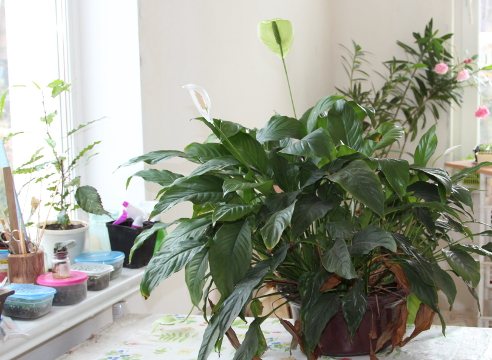

Important! Air humidity - it should not exceed 70%, otherwise, he will feel extremely uncomfortable and will gradually begin to die off.
We need mineral fertilizers containing similar components: potassium, phosphorus and nitrogen. Equally acceptable and, one might even say, desirable: molybdenum, manganese, copper and iron.
When to transplant
In most cases, the flower itself makes it clear when it is time for him to change the pot, for something larger. Usually, the time of the onset of transplantation can be determined by the appearance and volume of the flower. At this point, it takes up most of the flower capacity. A transplant is necessary even when the plant continues to grow and bloom, because the overgrown root part continues to give the flower its last strength. But it is still most favorable to transplant plants in early spring and always during the break between flowering periods. It is not recommended to disturb the flowering plant, as all the beauty will quickly fade.
Transfer after purchase
The purchase has been made and now a transplant is required. It can be done in 2-3 weeks from the date of purchase. During this period, acclimatization to new conditions of detention will take place. It is necessary to isolate from other species, as insects can be found in it. What needs to be prepared for the transplantation work:
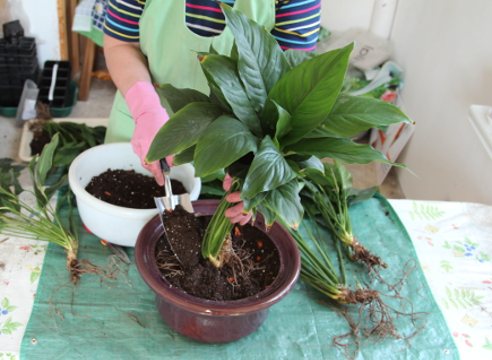

- pick up a pot;
- slightly acidic soil;
- pieces of pine bark (3-5 pcs.);
- scapula or scoop;
- spray;
- knife or scissors;
- latex gloves;
- powdered activated carbon;
- plant growth stimulant.
Very important! if you see protruding brown roots and swayed rosettes, then it's time to change the habitat of your tropical neighbor.
Also, the plant will give you a sign with its shrinking leaves. That's just, they can also dry out from a lack of moisture. In order to check for sure, you need to move the curtain apart and check the lower leaves. Have they started to dry out?
Spathiphyllum needs an urgent transplant.
- Do they just wither?
Need to water, spray or place in a darker area.
A transplant can be done even when the flower is starting to grow or has already grown. However, at the time when it begins to bloom, it is undesirable to touch.
Usually, a transplant for spathiphyllum is carried out every 3-5 years and the ideal recommended season for this is spring.
However, for flowers like "Women's Happiness", this does not play a big role, so it will be enough that the room will be at least +20 degrees.
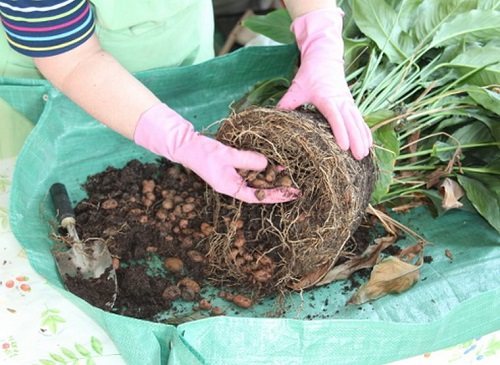

The difference between transfer and transshipment
As a rule, purchased spathiphyllum is simply dumped out of their old vase together with clods of earth, and later they are arranged in a new flowerpot with a larger diameter and with pre-prepared soil already poured to the bottom.
A transplant, on the other hand, implies the complete removal of these clods. That is, not only the flowerpot itself changes, but also the substrate to a fresher one.
The right time
The most inappropriate time for transplanting is when flowering is in progress, because at this moment the bush is not ready to take on an additional load. The result of such a shock is always the loss of all flowers and buds, since their spathiphyllum drops instantly. It is best to do the procedure after flowering, when the plant enters a dormant state. You can change the container in winter in December or in autumn.
It is allowed to carry out a transplant several months before flowering, in this case the flower has time to acclimatize, so stress will not affect the formation of peduncles in any way.
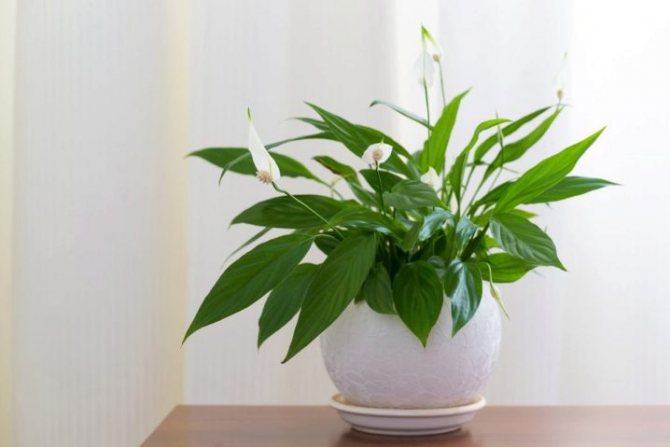

Flower transplant
Things that will be needed in the future:
- priming;
- gloves;
- secateurs;
- scoop;
- film;
- pot.
Plant preparation
It is necessary to clean out the roots, remove the old soil. If you are afraid of damage, then in the process you can use a wand. In the event that the bush is thick and heavily overgrown, then it is advisable to divide it. This will give them new space to grow. But look carefully, each outlet should have a good length of rhizome. That is, strong, healthy and without damage.
For transplanting, take a pot that will be slightly larger than the previous one, all because the flower will bloom only when the roots completely occupy all the space provided for them. It is advisable to use not tall vases, with a diameter of 15 to 20 cm.
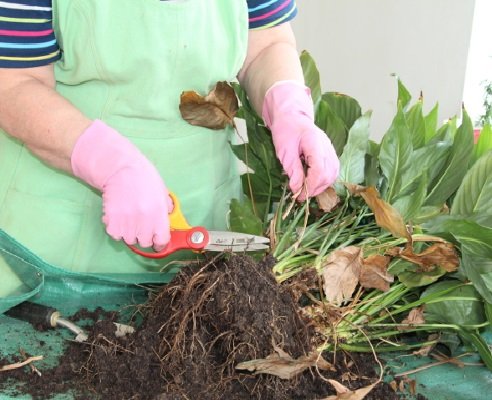

Also, it is necessary to prepare the plant itself for transplantation. As a rule, the roots of "Women's Happiness" are very tender and it is not advisable to touch them, but only for a full-fledged transplant, you will have to:
- get rid of dry tips on the leaves;
- get rid of wilted or too young flower shoots;
- trim the roots so that they are all on the same level;
- cut the stalks - it is advisable to use pruning shears or scissors for this.
Examine the roots:
- if you find decay, then you should immediately get rid of it - you can soak them in Previkur's solution;
- if there is damage, then they should be cut off and sprinkled with activated carbon.
Tear off the base of old leaves, but proceed with caution.
Continue peeling off layers until they give in easily, otherwise don't touch - just harm the flower.
After inspection, it is necessary to rinse the spathiphyllum under warm water to remove the remaining dry scales.
Priming
The soil mixture itself should be prepared. You can buy it ready-made in the store or mix it yourself. If you chose the second option, then in this case you will need:
- one share: larger sand, leafy soil, peat;
- two shares: sod land;
- one and a half shares: charcoal, brick chips.
Expanded clay or river pebbles can also become a drainage material.It is recommended to add perlite or vermiculite to preserve soil moisture.
Important! Tropical spathiphyllum adores slightly acidic and soft earth, therefore, if you still go to buy, then the best option for you will be a soil composition for plants of the Aroid order, which, by the way, includes spathiphyllum.
By choosing it for your plant, you will provide complete comfort and a favorable environment for your tropical "Women's Happiness".
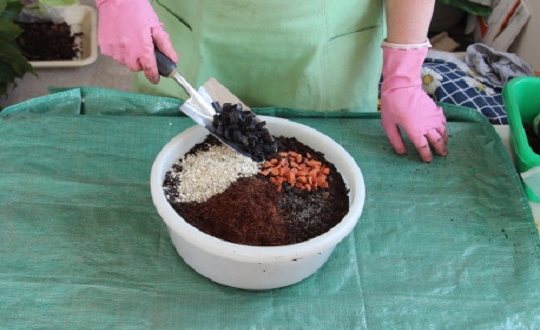

Memo:
- During the transplant itself, at the very final stage, it is necessary to slightly deepen the leg, and crush the earth around it. The outlet should be standing, not tilting or, moreover, wobbling.
- Do not deepen aerial roots.
- Be sure to water the "Women's Happiness" after the transplant.
- Spray the leaves with a spray bottle.
Is pine bark needed for soil
It is advisable to add a few small pieces of pine bark to the prepared substrate. You can use dried bark from trees for this or buy it. It is an additional drainage of the soil and helps to maintain the desired moisture.
The most important quality of the bark is its fungicidal effect, which has a detrimental effect on all kinds of parasites. Pine bark has the ability to keep the soil warm in cold weather, and in hot weather it serves as a source of coolness. After the soil has been prepared, it is important to choose the right pot.
When is it better to replant: in autumn or spring
The best time to transplant is spring. Before awakening, but before flowering, it can be carried out in the fall. However, there are cases when it is possible to carry out unscheduled transplants, namely:
- in case of damage;
- noticeable disease;
- when buying in a store;
- insects started up.
For example, if it withers, dries up, or yellowing of the lower leaves is noticeable. It is necessary to make a sanitary transplant. Such an unscheduled event will not harm the pet.
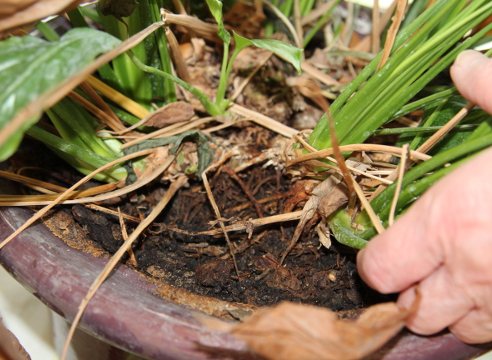

Description of the plant
The main feature of Feminine happiness is the fact that it has practically no stem. Outwardly, it seems that its elongated leaves grow out of the ground, like the stems of a bush.
Other features of the flower include:
- It has unique properties to purify the air from harmful microelements. Absorbs a large amount of toxic substances, including those emitted by finishing materials used for repairs.
- The sail, which is mistaken for a flower, is actually a kind of bait for insects. The flower looks like an ear of corn and is located in the center of the so-called sails.
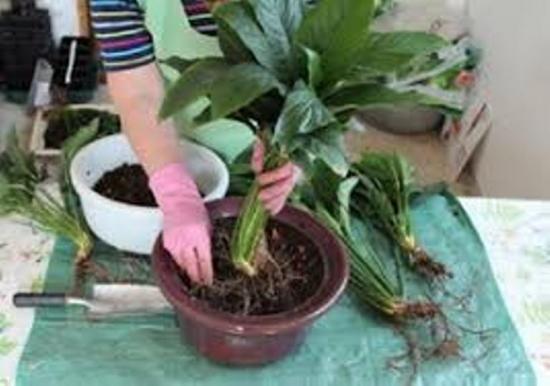

Toxicity - Spathiphyllum leaves contain a large amount of calcium oxalate.
Its contact with mucous membranes causes an acute burning sensation. Therefore, it is better to work with him with gloves.
It is interesting that Women's happiness is called because of the peculiar shape of the flowers, which is compared with the phallic one. According to popular belief, a girl who wants to improve her personal life should definitely put this plant on the windowsill.
Transplant instructions step by step
- Before transplanting, you need to ensure that the flower is watered along the edge of the pot. When the water is absorbed, very carefully pull the plant out, being careful not to damage the roots.
- Check the roots for integrity. Cut out damaged and rotten elements with scissors. Be sure to sprinkle with activated charcoal and dry.
- Transfer to a prepared pot (with drainage and soil), while setting in the center. Add soil to the missing places. Drizzle with water.
- Add soil when settling after absorbing water. Spray the leaves with water. For this, home sprayers are used. It is better to add a drop of any growth stimulant to the water. This will help relieve stress on the plant.
- Check for stability so that it does not fall over.
With this transplant, the rhizomes will be able to use the nutrients throughout the pot. This method does not involve a complete replacement of the soil. The plant itself does not suffer with such a transplant.
How to plant spathiphyllum correctly
- For starters, prepare the soil and pots for the young shoots. It is better to buy several identical containers for indoor plants in advance, such acquisitions will always come in handy, and an ensemble of pots in the same style always looks very advantageous.
- A bush is removed from the pot and the root system is carefully cleaned of soil. This must be done in order to understand which part of the root belongs to a particular process.
- Separate the root ball with your hands, do not use scissors or pruning shears, this will damage the roots. This is done simply, since its roots are quite flexible and thin.
- Each segment is planted in a separate flowerpot. In the future, we already know how to care for these young flowers.
- They should be positioned on the correct side with good enough and diffused lighting, watered as needed and moistened periodically.
- Young bushes are transplanted every year, and older flowers can be transplanted every 2-3 years.
Feature of the transplant of flowering spathiphyllum
A flower transplant during flowering is not desirable, it is better to wait until this process is completed. An extraordinary transplant is performed in situations where it can die in old soil. The soil in the pot must be changed completely.
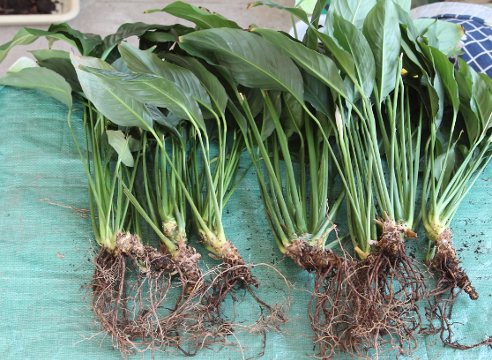

Attention! It is necessary to cut the peduncles, then the plant in the new soil will be able to form a good root system.
Selection rules
Spathiphyllum chopin - description of a home flower
When planting a large spathiphyllum bush or transferring a purchased plant into a new container, pay attention to the choice of a pot and soil recommended for indoor culture.
Pot
When choosing which pot is needed for spathiphyllum, the size of the previous one is determined. The plant is planted in a container, which exceeds the former container by 1.5-2 cm in width and height. Florists noticed that spathiphyllum blooms profusely when the roots cover the entire substrate.
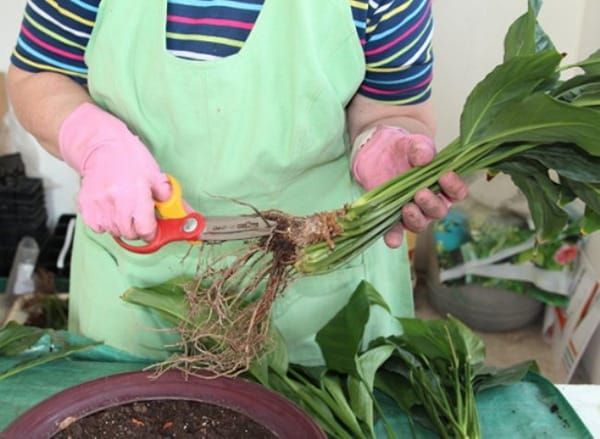

Pruning
In a pot that is too spacious, the bush will build up the root system and only then discard the peduncles. Containers with holes in the bottom are suitable, through which excess water flows into the pan after watering. As with any indoor plant, a drainage of 1-2 cm is required for spathiphyllum.
Soil
Spathiphyllum develops well in a weakly acidic substrate, pH 5-6.5, loose and light in structure. In such potting mixes, excess moisture seeps into the sump. In the trade network, they choose a universal mixture for aroid or tropical flowering plants, which is mixed with a handful of sand. Many growers prepare the substrate on their own. You can choose a suitable one, usually the simplest in execution, from several options:
- 3 parts of peat, 2 parts of leafy soil, 1 part each of humus, sand and bone meal;
- 1 part of leafy soil, peat, humus, sand, 2 parts of sod land;
- 1 part of leafy soil and peat, half of soddy soil and sand.
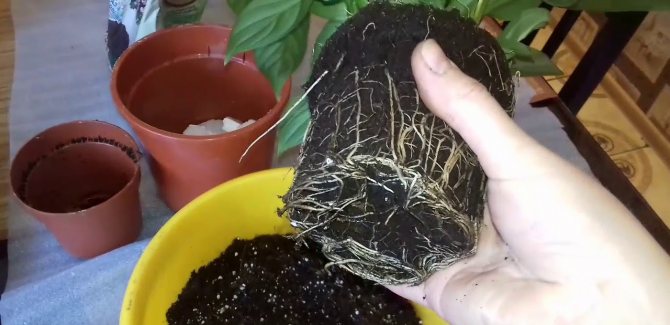

Pot
Horse peat is used. Wood bark, coconut fiber, charcoal and brick chips are also added to the substrate for looseness. Additives make up no more than 10% of the total mass. They also put sphagnum moss, which protects the soil mixture from drying out.
When transplanting, fertilizer is added - 0.5 teaspoon of superphosphate. If the substrate is prepared independently, the earth is spilled with a dark pink hot solution of potassium permanganate.
Fertilizers
For good flowering, spathiphyllum is regularly maintained with top dressing, otherwise a beautiful green bush will grow, but without the original white covers with flower cobs. Or the stalks will be thrown out for a short time and at long intervals. It is especially important to feed the plant in the spring-summer period, when all processes are activated: once every 10-16 days.
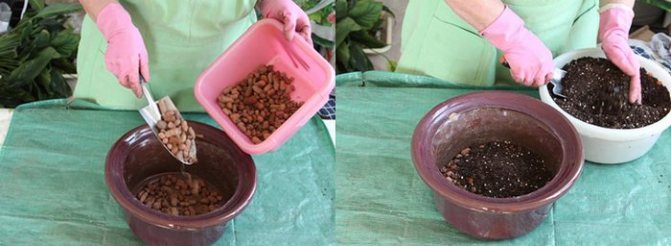

Priming
In winter, when the dormant period begins in the room culture, the substrate is fertilized once every 30 days. Spathiphyllum responds well to organic fertilizers available in stores, especially poultry droppings. Any universal preparations for flowering indoor plants are also suitable: "Flower", "Azalea" and others.
If no fertilization was applied at the end of February or in March, the spathiphyllum ends blooming in June, and the flower stalks do not form again. At the same time, too many nitrogen preparations should not be given, since the green mass will grow, but not the buds.
Note! Florists noticed that the appearance of brown spots on the leaf blades is evidence of an excess of nutrients.
Housewives often water the "woman's happiness" with chilled liquid after boiling pasta or potatoes, used from the aquarium with water. In late autumn and winter periods, when the intensity of natural lighting decreases, the humic fertilizer "Universal plant balm" is used for spathiphyllum. The drug stimulates culture and helps to cope with the lack of light.
Post-transplant care
At first, or rather about two to three weeks, spathiphyllum is in dire need of high humidity. For those who do not want to wait long for the plant to bloom again or bother with special care, then here's a piece of advice: move the pot with "Women's Happiness" to a greenhouse or something similar. Similarity means, for example, a plastic bag. Under the so-called "hood" a greenhouse effect is formed and the plant feels very good.
The only thing that you will need in the future is to take out the spathiphyllum for airing. If you go a long way and do not use a mini-greenhouse, then keep an eye on the humidity level. If it is in short supply, the flower will begin to turn yellow and wither. Then it is required to spray up to three times a day, watering only when the soil dries up (about 5-10 mm).
There are some simple steps to follow to speed up survival and prevent disease.
Air humidity
The plant needs to provide sufficient air importance. Observing this condition, you can achieve the appearance of beautiful leaves without spots. It is important to spray spathiphyllum daily with water from a sprayer. In the summer, the number of spraying is increased. You can increase the humidity by placing a jar filled with water next to the plant.
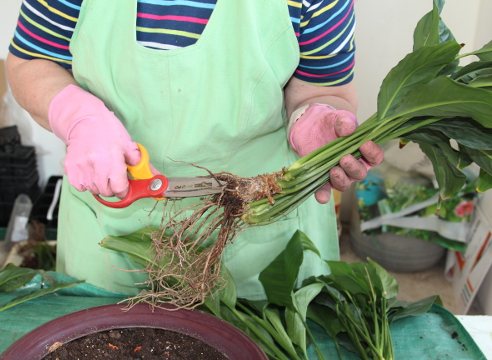

Watering a flower
Balanced watering is required. With insufficient moisture, the leaves turn yellow. If the leaves have dropped down, they look lethargic and lifeless, then this is also a signal of a lack of water. Moisture must be present in the roots of the flower. Watering must be carried out when the top layer of the earth in the pot dries out.
For irrigation, it is advisable to use filtered water at room temperature. It is recommended to add 5 drops of vinegar 9% to 1 liter of water, the flower loves acidified water.
Attention! With excessive watering, flowering will not come!
If the plant has dropped its leaves, this indicates an excess of moisture. In winter, watering spathiphyllum is reduced, removed away from heating appliances. It should be remembered that you cannot overmoisten the soil. The roots should not be in the water, this will lead to decay. After each watering, excess water is poured out of the pan.
Sun exposure
The sun's rays have a detrimental effect on spathiphyllum. In this case, spots with burns appear, then the leaves die off.
Important! When the first signs of sunburn appear, urgently move to another place. The plant may die in the sun. It will develop well in a small partial shade.
When to feed
The transplanted plant is fed with fertilizers starting from 5-6 weeks after transplanting.Fertilizers are applied during the growing season (spring and summer) once a week. The rest of the time, the flower is fed once a month. For top dressing, fertilizers containing nitrogen and a small amount of potassium are used. It is necessary to strictly follow the instructions for diluting the fertilizer, since an overdose can lead to undesirable consequences, then to death.
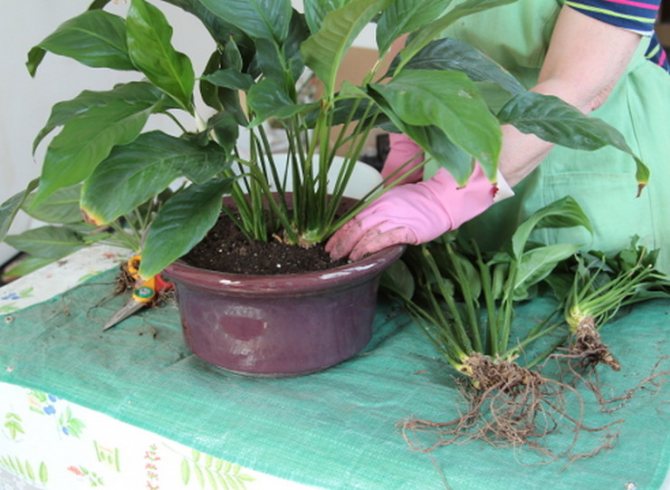

What shouldn't you do?
Overfilling is a big problem when caring for spathiphyllum. Excessive moisture in the pot can be detrimental to the plant. Excess moisture can indicate poor drainage.
What else is considered improper watering:
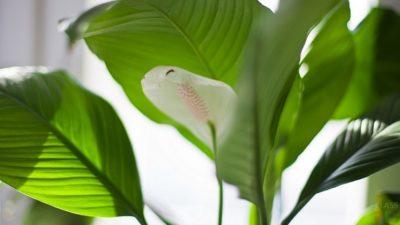

Stick to specific days or dates without considering the state of the land.- Moistening the flower with cold, ice water.
- Frequent watering in low room temperatures.
- Wait for the soil to dry completely.
- Lack of watering for more than 5 days is critical for spathiphyllum.
Questions and Answers
A few very popular questions:
What problems can you face after transplant
Some time after transplanting, the tips of the leaves may dry out on the plant, yellow spots form. The formation of yellow-brown spots indicates overflow. In case of an overdose of fertilizers, blackening of the flowers may be observed. If blackening is found, the soil should be treated with a foundation solution. Dissolve 2 grams of the drug in 1 liter of water. Yellowing occurs due to improper watering or when kept in a too sunny place.
Important! Feature - after flowering, yellowing of the leaves is considered a normal process and does not require intervention.
With a lack of light, narrow long leaves grow in spathiphyllum, it is required to change the place.
Why isn't it blooming?
There are many reasons:
- lack of minerals;
- old age;
- lack of moisture;
- low temperature.
Why did the leaves turn black?
There are, again, several reasons:
- underfilling;
- overflow;
- lack of minerals.
What to do in this case? Take the plant out of the pot, cut off new roots and move it into a new, pre-treated pot with new soil.
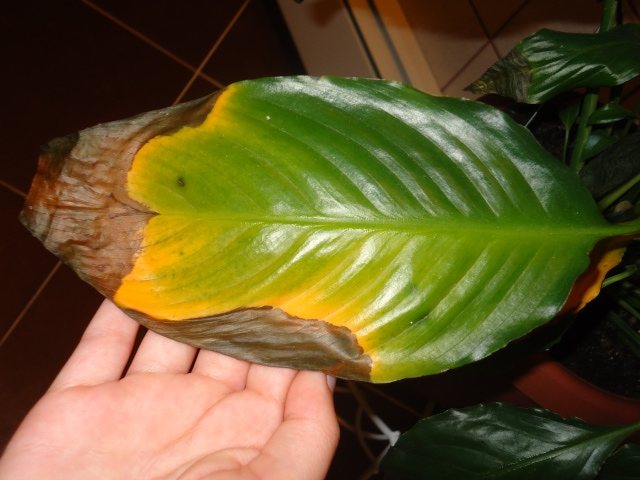

How to get rid of parasites?
Our main enemies were aphids and spider mites. In order to get rid of unwanted neighbors, you should cover the ground around the plant with a film and do not allow the soap and nicotine sulfate solution to be absorbed while you wash the leaves. The procedure needs to be carried out several times, but the parasites are gone.
Other pests can also cause poor growth and development:
- A sooty mushroom. The blackening of the leaves indicates the appearance of the fungus. It is localized on the upper plate of the leaf, disrupting the respiration of the flower. The measure of influence is to carry out soap spraying.
- Mealy worm. Detected in high humidity. Hiding among the leaves. Inspect periodically for pests. With a small number of copies, it can be removed with a cotton pad dipped in an alcohol solution. An infusion of citrus peels is considered effective; it is used to treat mealy worms. Take 100 grams of crusts, place in 1 liter of water, keep in a dark place for 2 days. Wipe the leaves with the resulting solution.
- Shield. Juveniles are barely visible. The appearance of dark spots on the stem and leaves indicates the presence of a scale insect. A good result is achieved by spraying a soap-tobacco solution with the addition of denatured alcohol or kerosene. To treat a plant from aphids and spider mites, you can use an infusion of onion husks. Heat 5 liters of water to 40 degrees, soak 100 grams of husk. Keep in a dark place for 2 days, then process the leaves.
Spathiphyllum is a very beautiful flower and, moreover, picky to care for. It can become an irreplaceable part of your decor - whether it is a simple apartment or even an office, it does not have the slightest importance, it looks harmonious anywhere.However, if you do not follow the rules of care, if you ignore his needs, then it is unlikely that "Women's Happiness" will be able to please you in the future with its delicate flowers.
Diseases of spathiphyllum
"Women's happiness" sometimes gets sick:
- If the leaves turn yellow. The source of such an ailment is a violation of the rules of agricultural technology. This also happens with insufficient moisture in the earth. To soak dry soil, they slowly begin to water it, but do not fill it. With insufficient moisture, the leaves may also turn yellow. They are wiped with a damp sponge, sprayed with a spray bottle, and a pallet is placed next to a pot of wet sand or expanded clay.
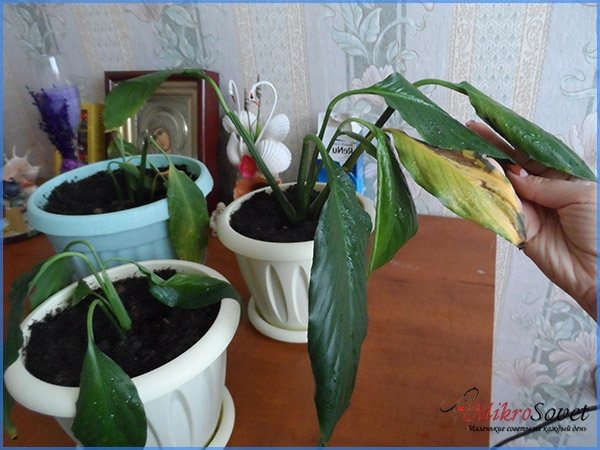

- The leaves turned black. This is the main symptom of malfunctioning and dying of the root system. This happens if you often flood the plant with water, especially in winter. The flower is pulled out of the ground, the blackened unhealthy roots are removed and the flower is replanted again. This saves the health of the plant, but the main thing is to prevent the repetition of mistakes in care.
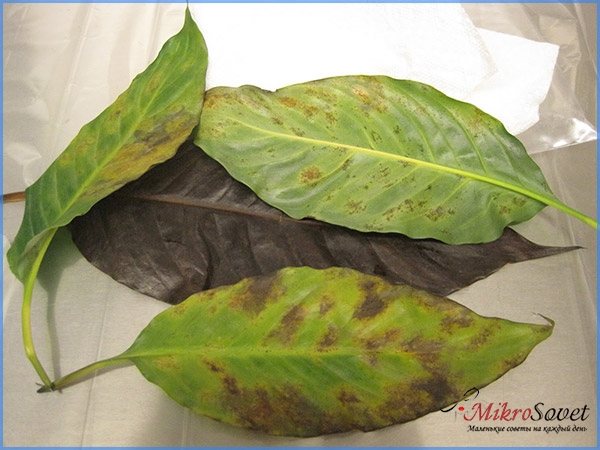

- The leaves are drying. Often the tips of the leaves dry out due to the influence of too cold or dry air. Lack of nutrition also leads to such a negative phenomenon. It is enough to change the place where the flower grows to a more favorable one, and nourish its roots with fertilizer so that it turns green again. Black or brown patches on the leaves show through if the home flower is frequently and over-fertilized. The leaf may turn completely black and fall off.
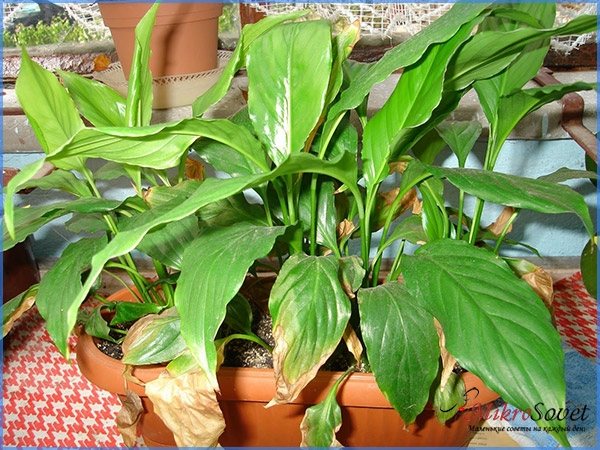

- Spathiphyllum does not bloom. This is a sign of a violation of the rules of care. This is often the case if the flower is transplanted into a wide and large pot. The cobs will not appear until the roots have completely filled the entire pot. After transplanting into a smaller container, it is better to hold the plant in a cool place to invigorate it.
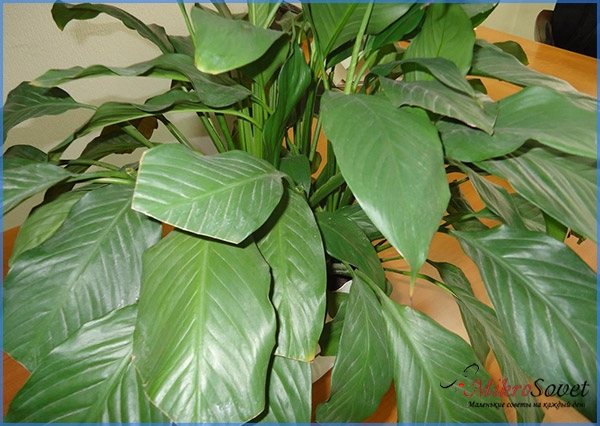

Possible problems
It often happens that the flower after transplanting has dropped its leaves, withers. There is nothing surprising in the fact that he is sick, wilted and hung his shoots, it's all about the shock that the plant is experiencing at the moment. Such a state is inevitable, since initially any flower growing in nature was not intended to move from place to place. When we humans start doing something like this, it inevitably causes problems. To minimize this condition, you need the following.
- Disturb the roots as little as possible. The plant breeder should remove the spathiphyllum as carefully as possible, do not shake the dirt on the roots.
- The more the old root system remains, the easier the bush will tolerate a change in capacity.
- It is important to water the soil with high quality, this is a simple and good way to avoid shock during transplantation, which will help the plant quickly settle into a new place.
- You can add some sugar along with watering to help reduce shock.
- Some growers advise pruning the stems at the time of transplanting, but this is a bad idea when it comes to the particular flower in question.

